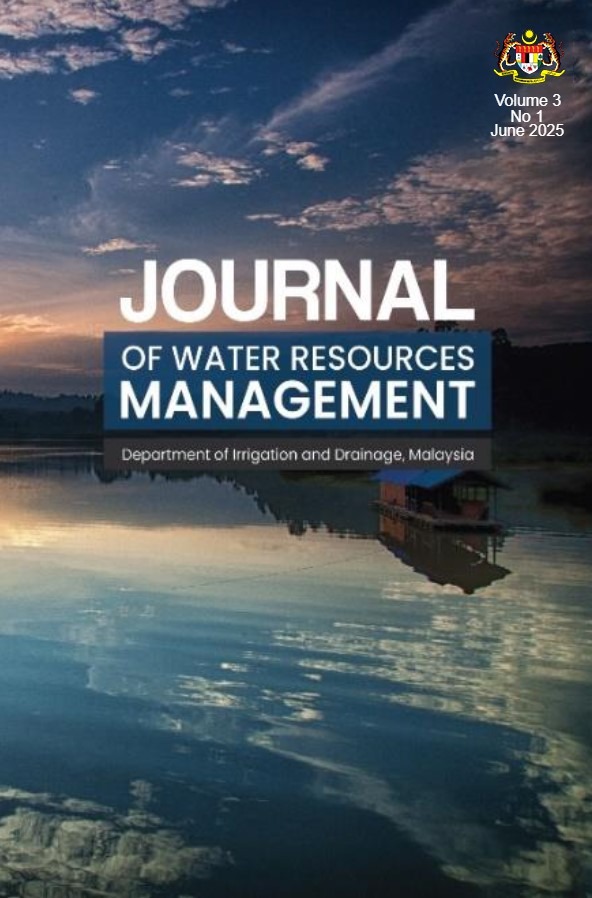Published 10-07-2025
Keywords
- Riverbank,
- Erosion,
- Channel morphology
How to Cite
Copyright (c) 2025 Journal of Water Resources Management

This work is licensed under a Creative Commons Attribution-NonCommercial-ShareAlike 4.0 International License.
Abstract
Erosion of riverbanks has far-reaching consequences, including changes to river shape and local habitat, destruction of riparian land, harm to buildings and other infrastructure, and a weakened capacity to withstand floods. The determination of which areas of a riverbank are susceptible to erosion is a crucial step in being able to forecast changes in the river's course and aid with stream management and restoration. This study assessed the magnitude of streambank erosion at three different channel morphologies which are straight, mild bend and extreme curve channel. The purpose of this research is to conduct fieldwork erosion monitoring of riverbanks, including those affecting hydraulic characteristic, bank geometry and soil properties. This is done so that the extent of riverbank erosion that occurs at natural rivers because of land use at locations upstream of the river. Erosion monitoring data provide measurements of erosion depth and riverbank cross-profiling across different channel morphologies. The total erosion lengths for the straight, mild bend, and extreme curve channels are 15.4 cm, 10.2 cm, and 10.2 cm, respectively. The highest erosion occurs in the straight channel, primarily due to the presence of natural groynes near the bank, which disrupt river velocity and lead to riverbed deterioration rather than direct riverbank erosion.

